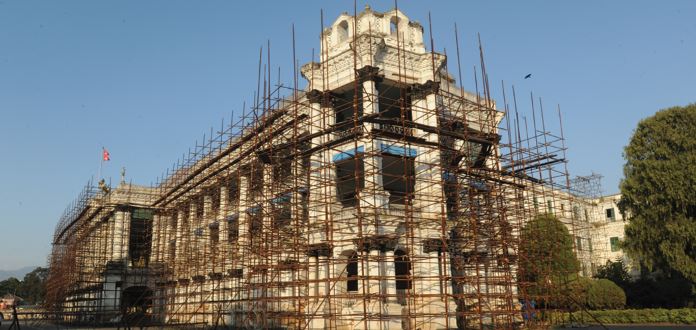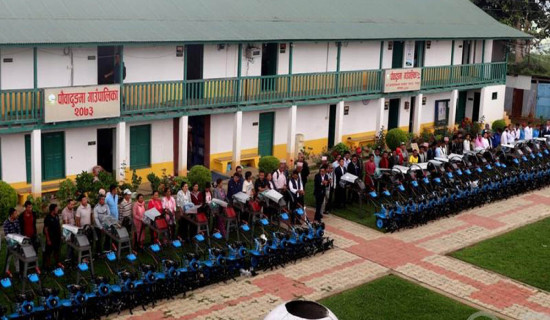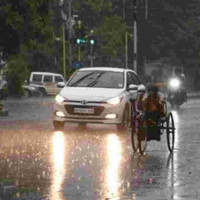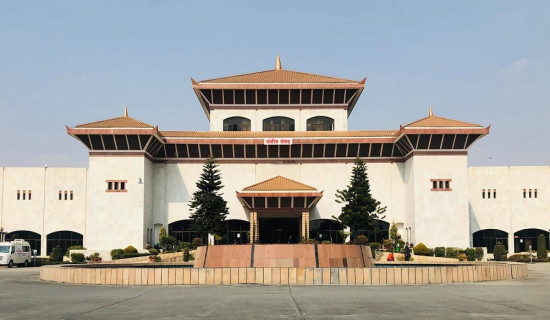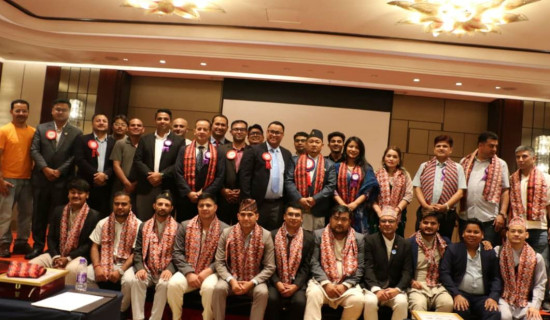- Wednesday, 2 July 2025
Rana-era palaces being retrofitted, reconstructed
BY A STAFF REPORTER Kathmandu, June 5: Numerous palaces of various styles were built in and outside Kathmandu by the Ranas during their 104-year rule in Nepal.
After their fall, however, many of these buildings fell into disrepair and as a result, a few of them were toppled by the 2015 earthquake. Now though, the palaces of the Kathmandu Valley are being retrofitted and reconstructed.
The Central Level Project Implementation Unit (CLPIU) of the Department of Urban Development and Building Construction under the Ministry of Urban Development is carrying out the work to restore the mansions to their original form.
Work on retrofitting Babar Mahal, Singha Durbar, Keshar Mahal and Bal Mandir and the front face of the Singha Durbar as well as Sheetal Niwas and Radio Nepal have reached the final stages, informed Kaji Man Pyakurel, museum officer currently with the CLPIU.
“We have completed 55 per cent of the work on Keshar Mahal and Bal Mandir,” Pyakurel said. “We have been repairing these Rana-era buildings for the past two years.”
The government had allocated over Rs. 860 million for Babar Mahal, Rs. 650 million for Bal Mandir, Rs. 590 million for Keshar Mahal and Rs. 410 million for Singha Durbar in the last fiscal year. This year, it allocated Rs. 9.44 billion for Singha Durbar, Bal Mandir building, Keshar Mahal, Babar Mahal and health institution buildings hit by the earthquake for this fiscal year. The government has provided Rs. 377.3 billion to the Ministry of Urban Development as a whole.
“Remaining work on all these palaces will be completed with the next one-and-a-half years,” he said.
Meanwhile, work has completed on retrofitting the Staff College of Jawalakhel and the Law Library building of Tri-Chandra College. Nepal Rastra Bank’s buildings at Thapathali and Baluwatar, which are being completely reconstructed, are also nearly finished.
However, no work has begun on Harihar Bhawan of Lalitpur. Kosh Nath Adhikari, project director of CLPIU, told The Rising Nepal that the Unit had twice called tenders for it through the line of credit extended by the Government of India.
According to Adhikari, Nepali contractors cannot participate in the tender and the Indian contractor applying presented a cost estimate exceeding the tender amount by seven to nine per cent. “That is why we have not been able to award the contract and begin work,” he said.
For Tri-Chandra, the CLPIU has prepared the Detailed Project Report (DPR) and asked the Ministry of Finance to allocate budget through the multi-year plan for reconstruction but it has not done so yet.

